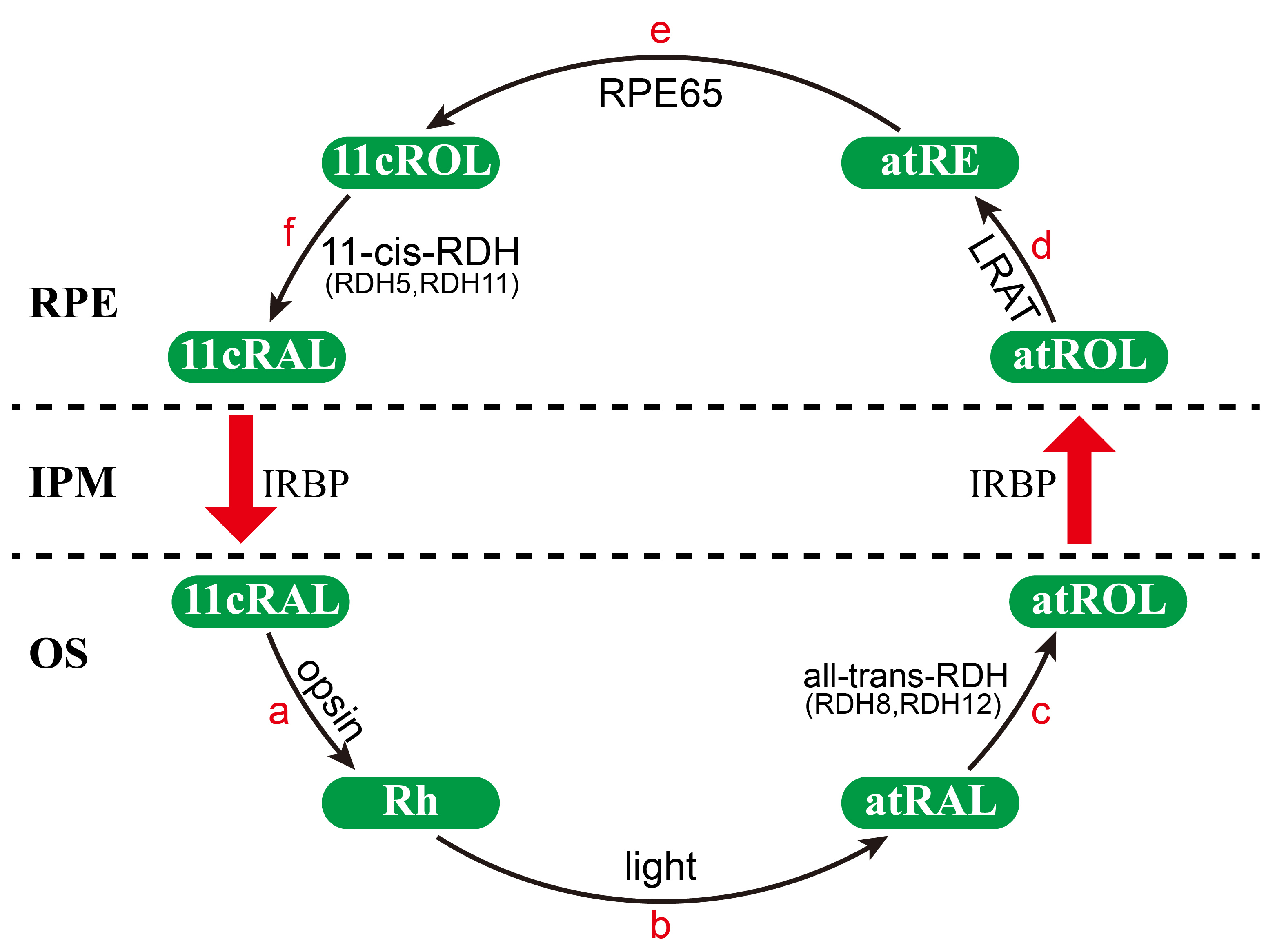Figure 1. The visual cycle in the
vertebrate retina. The classical visual cycle is a chain of
biochemical reactions that are catalyzed by retinoid
dehydrogenase/reductase (RDH) in photoreceptors or the retinal
pigment epithelia (RPE) and are responsible for regenerating
visual pigment following light exposure [
28].
The visual process is initiated by the photoisomerization of
11-cis-retinal (11cRAL) to all-trans-retinal (atRAL). First,
11cRAL diffuses from the RPE to photoreceptor-rod outer segments
(OS; rod outer segments, ROS; and cone outer segments, COS) and
is coupled to opsin to generate rhodopsin (Rh; reaction a).
Then, in the photoreceptor outer segments, the absorption of
light by rhodopsin causes isomerization of the chromophore from
the 11-cis form to the all-trans form (reaction b). The atRAL is
reduced to all-trans-retinol (atROL) in the reaction catalyzed
by an nicotinamide-adenine dinucleotide phosphate
(NADPH)-dependent all-trans-retinal-specific dehydrogenase
(all-trans-RDH, RDH8, RDH12; reaction c) [
8,
22].
Next, atROL diffuses to the RPE, where it is esterified to
all-trans-retinyl-ester (atRE) in a reaction catalyzed by
lecithin: retinol acyltransferase (LRAT; reaction d). The
isomerization of atRE to 11cROL is catalyzed by RPE-specific
65 kDa protein (RPE65; reaction e), which is the key step
in the retinoid visual cycle [
29-
31].
11cROL is then oxidized by 11-cis-RDH (RDH5, RDH11) to 11cRAL to
complete the retinoid cycle (reaction f). IPM,
interphotoreceptor matrix; IRBP, inter-photoreceptor retinol
binding protein.
 Figure 1
of Wang, Mol Vis 2012; 18:1021-1030.
Figure 1
of Wang, Mol Vis 2012; 18:1021-1030.  Figure 1
of Wang, Mol Vis 2012; 18:1021-1030.
Figure 1
of Wang, Mol Vis 2012; 18:1021-1030. 